 W
WThe following lists of copper mines in the United States:
 W
WThe Anaconda Copper Mine was a large copper mine in Butte, Montana. Originally a silver mine, it was bought in 1881 by Marcus Daly from Michael Hickey. Hickey was a prospector and Union Civil War veteran. He named his claim the Anaconda Mine after reading Horace Greeley's Civil War account of how Ulysses S. Grant's forces had surrounded Robert E. Lee's forces "like an anaconda". Daly developed the Anaconda Mine in partnership with George Hearst, father of William Randolph Hearst, James Ben Ali Haggin and Lloyd Tevis of San Francisco.
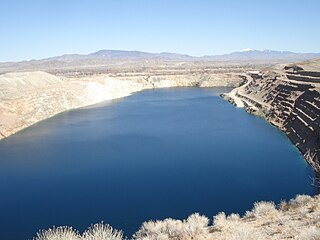 W
WThe Anaconda Copper Mine is an open pit copper mine in Lyon County, Nevada that was owned and operated by the Anaconda Mining Company. It is located adjacent to the town of Yerington. A company town, Weed Heights, was built to support the mining operation which ran from 1952 until 1978.
 W
WThe Berkeley Pit is a former open pit copper mine located in Butte, Montana, United States. It is 1 mi (1,600 m) long by 1⁄2 mi (800 m) wide with an approximate depth of 1,780 feet (540 m). It is filled to a depth of about 900 feet (270 m) with water that is heavily acidic, about the acidity of Coca-Cola, lemon juice, or gastric acid. As a result, the pit is laden with heavy metals and dangerous chemicals that leach from the rock, including copper, arsenic, cadmium, zinc, and sulfuric acid.
 W
WThe Bingham Canyon Mine, more commonly known as Kennecott Copper Mine among locals, is an open-pit mining operation extracting a large porphyry copper deposit southwest of Salt Lake City, Utah, in the Oquirrh Mountains. The mine is the largest man-made excavation, and deepest open-pit mine in the world, which is considered to have produced more copper than any other mine in history – more than 19 million tons. The mine is owned by Rio Tinto Group, a British-Australian multinational corporation. The copper operations at Bingham Canyon Mine are managed through Kennecott Utah Copper Corporation which operates the mine, a concentrator plant, a smelter, and a refinery. The mine has been in production since 1906, and has resulted in the creation of a pit over 0.75 miles (1,210 m) deep, 2.5 miles (4 km) wide, and covering 1,900 acres. It was designated a National Historic Landmark in 1966 under the name Bingham Canyon Open Pit Copper Mine. The mine experienced a massive landslide in April 2013 and a smaller slide in September 2013.
 W
WThe Blue Ledge Mine is an inactive underground copper mine that has been classified as a Superfund Site by the Environmental Protection Agency (EPA) due to high concentrations of heavy metals. The mine is located approximately 3 miles south of the California–Oregon border in the Rogue River-Siskiyou National Forest. It is within the Siskiyou Mountain range, and sits near a summit at about 4,800 feet above sea level. The underground mining excavations span over 2 miles, and it is one of the largest mining operations to have existed in the region.
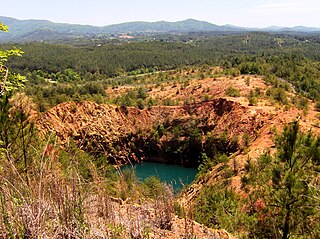 W
WThe Burra Burra Mine is a copper mine located in Ducktown, Tennessee, in the southeastern United States. Named for the famous mine in Australia, the Burra Burra Mine is located in the Copper Basin geological region, and extracted over 15 million tons of copper ore during its 60 years of operation between 1899 and 1959. The mine's remaining structures are listed on the National Register of Historic Places as part of the Burra Burra Mine Historic District. The site is also home to the Ducktown Basin Museum, and the museum and mine are a Tennessee State Historic Site operated in partnership with the Tennessee Historical Commission.
 W
WThe Chino Mine, also known as the Santa Rita mine, is an open-pit porphyry copper mine located in the town of Santa Rita, New Mexico 15 miles (24 km) east of Silver City. The mine was started as the Chino Copper Company in 1909 by mining engineer John M. Sully and Spencer Penrose, and is currently owned and operated by Freeport-McMoRan Inc. subsidiaries. The area where the mine is located is at an average elevation of 5,699 feet (1,737 m).
 W
WThe Cliff mine was the first successful copper mine in the Copper Country of the state of Michigan in the United States. The mine is at the now-abandoned town of Clifton in Keweenaw County. Mining began in 1845, and the Cliff was the most productive copper mine in the United States from 1845 through 1854. Large-scale mining stopped in 1878.
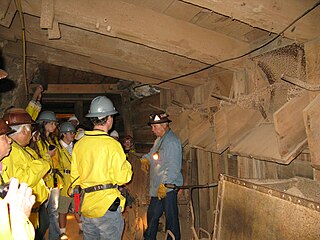 W
WThe Copper Queen Mine was a copper mine in Cochise County, Arizona, United States. Its development led to the growth of the surrounding town of Bisbee in the 1880s. Its orebody ran 23% copper, an extraordinarily high grade. It was acquired by Phelps Dodge in 1885.
 W
WThe Delaware Mine is located off U.S. Highway 41, 12 miles (19 km) in Grant Township, Keweenaw County, south of Copper Harbor, Michigan and is a Keweenaw Heritage Site. The Delaware Copper Mine provides tours of one of the oldest copper mines in the Keweenaw, dating back to 1846. The mine had five shafts, with the deepest reaching 1,400 feet (430 m). The mine is open June through October and offers guided and self-guided tours.
 W
WThe Elizabeth Mine was a copper mine located on the town line between the Town of Strafford and the Town of Thetford, in Orange County, Vermont.
 W
WThe Ferris-Haggerty Mine Site was one of the richest components of the Grand Encampment Mining District in Carbon County, Wyoming. The site was first exploited by Ed Haggerty, a prospector from Whitehaven, England, in 1897 when he established the Rudefeha Mine that would later be known as the Ferris-Haggerty Mine on a rich deposit of copper ore. Haggerty was backed by George Ferris and other investors, of whom all but Ferris dropped out. The partners sold an interest to Willis George Emerson, who raised investment funding for improvements to the mine. These facilities included an engineering feat of its day by developing a 16-mile (26 km) aerial tramway to carry high grade copper mined at the Ferris-Haggerty Mine (FHM) over the Continental Divide to the smelter in Encampment. The tramway was longest aerial tramway the world had ever seen. The mine was eventually acquired by the North American Copper Company for $1 million. By 1904 the mine had produced $1.4 million in copper ore, and was sold to the Penn-Wyoming Copper Company. However, even with copper prices peaking in 1907, the company had difficulty making a profit from the remote mine site. The company was over-capitalized and under-insured and was suffered devastating fires at the mine site in March 1906 and May 1907 which halted production. Business disputes and a fall in copper prices prevented re-opening of the mine even after it was rebuilt. Machinery was salvaged after a foreclosure in 1913. A total of 23 million pounds of copper ore was extracted from the mine during its life.
 W
WThe Grandview Mine, also known as the Last Chance Mine, was operated by Pete Berry from 1892 until 1901 in what later became Grand Canyon National Park. The Grandview Mine Historic District includes what remains of the mine workings and machinery as well as the ruins of a stone house and sleeping shanty. Physical evidence, including low stone walls and construction debris, suggests that several wood structures were also originally present on the site.
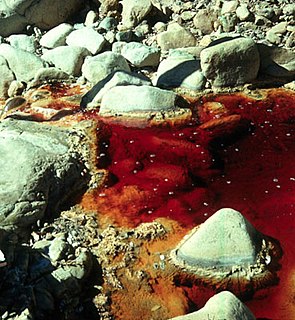 W
WIron Mountain Mine, also known as the Richmond Mine at Iron Mountain, is a mine near Redding in Northern California, US. Geologically classified as a "massive sulfide ore deposit", the site was mined for iron, silver, gold, copper, zinc and pyrite intermittently from the 1860s until 1963. The mine is the source of extremely acidic mine drainage which also contains large amounts of zinc, copper and cadmium. One of America's most toxic waste sites, it has been listed as a federal Superfund site since 1983.
 W
WKennecott, also known as Kennicott and Kennecott Mines, is an abandoned mining camp in the Valdez-Cordova Census Area in the U.S. state of Alaska that was the center of activity for several copper mines. It is located beside the Kennicott Glacier, northeast of Valdez, inside Wrangell-St. Elias National Park and Preserve. The camp and mines are now a National Historic Landmark District administered by the National Park Service.
 W
WThe Keweenaw Peninsula is the northernmost part of Michigan's Upper Peninsula. It projects into Lake Superior and was the site of the first copper boom in the United States, leading to its moniker of "Copper Country." As of the 2000 census, its population was roughly 43,200. Its major industries are now logging and tourism, as well as jobs related to Michigan Technological University and Finlandia University.
 W
WKGHM Polska Miedź S.A., commonly known as KGHM, is a Polish multinational corporation that employs around 34,000 people around the world and has been a major copper and silver producer for more than 50 years. In 1991, the company was established as a state enterprise and since 1997, their shares have been traded on the Warsaw Stock Exchange. Currently, KGHM operates 9 open-pit and underground mines located in Poland, Canada, the USA and Chile and is actively advancing 4 projects. KGHM produces key global resources including copper, copper sulphate, gold, silver, nickel, nickel sulphate, molybdenum, rhenium, lead, sulphuric acid, selenium, platinum group metals. KGHM is based in Lower Silesian Voivodeship in Lubin, Poland.
 W
WThe Lavender Pit is a former open pit copper mine near Bisbee in Cochise County, Arizona, United States. It is located near the famous Copper Queen Mine. The Lavender Pit was named in honor of Harrison M. Lavender (1890–1952), who as Vice-President and General Manager of Phelps Dodge Corporation, conceived and carried out this plan for making the previously unprofitable low-grade copper bearing rock of the area into commercial copper ore.
 W
WThe Mineral Park mine is a large open pit copper mine located in the Cerbat Mountains 14 miles northwest of Kingman, Arizona, in the southwestern United States. A 2013 report said that Mineral Park represented one of the largest copper reserves in the United States and in the world, having estimated reserves of 389 million tonnes of ore grading 0.14% copper and 31 million oz of silver.
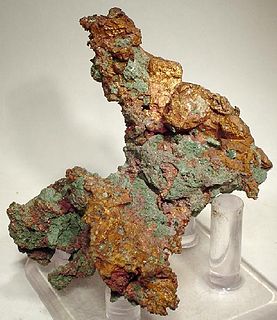 W
WThe Minesota Mine is a former copper mine near Rockland, Ontonagon County in the Upper Peninsula of the U.S. state of Michigan. The Minesota was one of the most productive and famous early mines in the Michigan Copper Country.
 W
WThe Minong Mine is a mine site located west of McCargoe Cove campground on Isle Royale National Park, Michigan, United States containing both the remnants of a 19th-century copper mine and remains of prehistoric mining activity. It was listed on the National Register of Historic Places in 1977.
 W
WThe Mohawk Mining Company was a major copper mining company, based in the Keweenaw Peninsula of Michigan, that was established in November 1898 and lasted until 1932. The company, between 1906 and 1932, paid out more than $15 million in shareholder dividends. The Mine is best known for the large amounts of mohawkite that were found on the property. The Mohawk mine operated until 1932; in 1934 it was purchased by the Copper Range Company.
 W
WThe Morenci Mine is a large copper mine located near Morenci, Arizona, United States. Morenci represents one of the largest copper reserves in the United States and in the world, having estimated reserves of 3.2 billion tonnes of ore grading 0.16% copper. It is located in Greenlee County, just outside the communities of Morenci and Clifton. Freeport-McMoRan is the principal owner and, since 2016, Sumitomo Group has owned a 13% interest in the mine.
 W
WThe New Cornelia mine is a currently inactive open-pit copper mine in Pima County, Arizona, United States. It was the only productive mine in the Ajo mining district, and is located just outside the town of Ajo, which was built as a company town to serve the New Cornelia mines. The roughly circular pit is one and a half miles across at its widest point, and 1,100 feet deep at the center.
 W
WThe Nonesuch Mine is an abandoned copper mine and small ghost town in the southeast corner of the Porcupine Mountains State Park in Carp Lake Township, Ontonagon County, near Silver City, Michigan, United States. The area was given its name soon after Ed Less discovered the Nonesuch vein of copper on the Little Iron River in 1865. The name refers to the occurrence of the copper in sandstone: "nonesuch" ore existed elsewhere in the Copper Country.
 W
WOld Newgate Prison is a former prison and mine site on Newgate Road in East Granby, Connecticut. It is now operated by the state of Connecticut as the Old New-Gate Prison & Copper Mine Archaeological Preserve. Previously closed for restoration since 2009, it was re-opened on July 14, 2018. The site includes a colonial-era copper mine, and the remains of the state's first official prison, which was used between 1776 and 1782 to house prisoners of war from the American Revolutionary War. The site was designated a National Historic Landmark in 1972.
 W
WThe Pahaquarry Copper Mine is an abandoned copper mine located on the west side of Kittatinny Mountain presently in Hardwick Township in Warren County, New Jersey in the United States. Active mining was attempted for brief periods during the mid-eighteenth, mid-nineteenth, and early twentieth centuries but was never successful despite developments in mining technology and improving mineral extraction methods. Such ventures were not profitable as the ore extracted proved to be of too low a concentration of copper. This site incorporates the mining ruins, hiking trails, and nearby waterfalls, and is located within the Delaware Water Gap National Recreation Area and administered by the National Park Service.
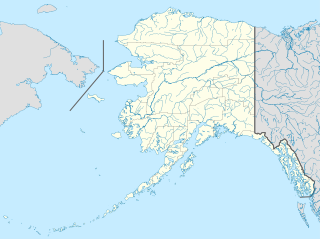 W
WPebble Mine is the common name of a very large porphyry copper, gold, and molybdenum mine development project in the Bristol Bay region of Southwest Alaska, near Lake Iliamna and Lake Clark. As of November 2020, mine developers are seeking federal permits from the U.S. Coast Guard and the Bureau of Safety and Environmental Engineering. State permitting will follow, which the developer expects to take up to three years. In November 2020 the developer was denied a U.S. Army Corps of Engineers permit for its proposed mine discharge plan.
 W
WThe Ray mine is a large copper mine located in Arizona, in the southwestern part of the United States, currently owned by Asarco, a subsidiary of Grupo México. Asarco acquired the mine from Kennecott Copper in 1986. The Ray mine has one of the largest copper reserves in the United States, with proven and probable reserves of 835.7 million tonnes of ore grading 1.73% copper, at 31 December 2018. It is located in Pinal County, near the town of Kearny.
 W
WResolution Copper (RCM) is a joint venture owned by Rio Tinto and BHP Billiton formed to develop and operate an underground copper mine near Superior, Arizona, U.S. The project targets a deep-seated porphyry copper deposit located under the now inactive Magma Mine. Rio Tinto has reported an inferred resource of 1.624 billion tonnes containing 1.47 percent copper and 0.037 percent molybdenum at depths exceeding 1,300 metres (0.81 mi). The proposed mine is one of the largest copper resources in North America. Following the passage of the 2015 National Defense Authorization Act, many Native American and conservation groups fear the copper mine will destroy sacred and environmentally sensitive land.
 W
WThe Robinson Mine is a porphyry copper deposit located at Ruth, White Pine County, Nevada, in the Egan Range, 4 miles (6.4 km) west of Ely. The mine comprises three large open pits: Liberty, Tripp-Veteran and Ruth. The ore is extracted using conventional surface methods, and is then processed into a copper-gold concentrate, and a molybdenum concentrate in a concentrating plant. Since 2012 the mine has been owned and operated by Polish copper miner KGHM Polska Miedź S.A.
 W
WRosemont Copper is the name of a proposed new and large open pit copper mine project pursued by the Canadian mining corporation Hudbay Minerals. It has undergone a permitting review process under the direction of the United States Forest Service and the U.S. Army Corps of Engineers and has been delayed by legal judgements and suspension of its operating permit by the US Army Corps of Engineers. The project site is located within the Santa Rita Mountains and Coronado National Forest, in Pima County of southern Arizona.
 W
WHelvetia is a populated place in Pima County, Arizona, that was settled in 1891 and abandoned in the early 1920s. Helvetia is an ancient name for Switzerland.
 W
WThe Schuyler Copper Mine is an abandoned, historic copper mine located in what is now North Arlington in Bergen County, New Jersey, United States. Operations began in 1715, making it the earliest copper mine in New Jersey and one of the oldest in the United States. In 1755, it was the site of the first use of a steam engine assembled in America. Later, starting in 1794, the first steam engine was manufactured in the United States near here. Shortly before and after, but not during, the revolutionary war, the mine was a major copper producer. Even though nothing remains of the mining operations above ground, the collapse of the underground shafts and tunnels caused damage as recently as 1989.
 W
WThe Sierrita Mine is a large copper mine located in the Sierrita Mountains of Arizona, in the southwestern part of the United States. The mine is located in southern Pima County, southwest of Tucson and west of Green Valley-Sahuarita.
 W
WTamarack mine is a copper mine located in Osceola Township, Houghton County, north of Calumet, Michigan. The first shaft was started in 1882 and five shafts were eventually mined. In 1966 seven-year-old Ruth Ann Miller fell into shaft #4 and a rescue was impossible.
 W
WTubal Cain Mine is an abandoned copper mine in the Buckhorn Wilderness, east of Olympic National Park in the US state of Washington. The main adit penetrates 450 meters into Mount Worthington.
 W
WTyrone is a census-designated place in Grant County, New Mexico, United States. Its population was 637 as of the 2010 census.
 W
WJerome is a town in the Black Hills of Yavapai County in the U.S. state of Arizona. Founded in the late 19th century on Cleopatra Hill overlooking the Verde Valley, Jerome is located more than 5,000 feet (1,500 m) above sea level. It is about 100 miles (160 km) north of Phoenix along State Route 89A between Sedona and Prescott. Supported in its heyday by rich copper mines, it was home to more than 10,000 people in the 1920s. As of the 2010 census, its population was 444. It is now known for its tourist attractions, such as its "ghost town" status and local wineries.
 W
WWilliam Henry Bay is a waterway in the U.S. state of Alaska. It is located near Haines in the Alexander Archipelago. The only commercial copper deposit in Southeast Alaska situated north of Prince of Wales Island was located in the bay. Significant gold and strategic mineral anomalies were found at William Henry Bay during surveys in 2011.